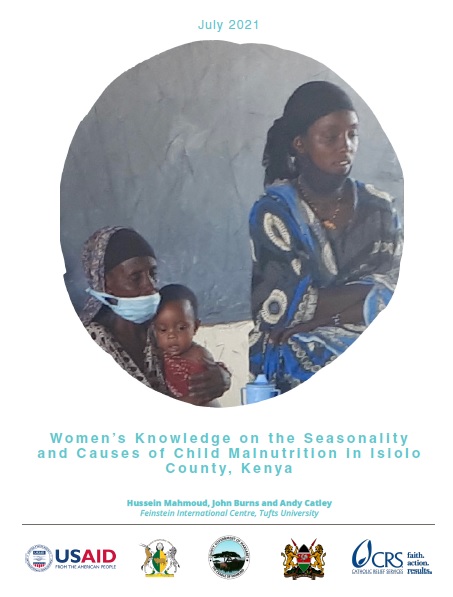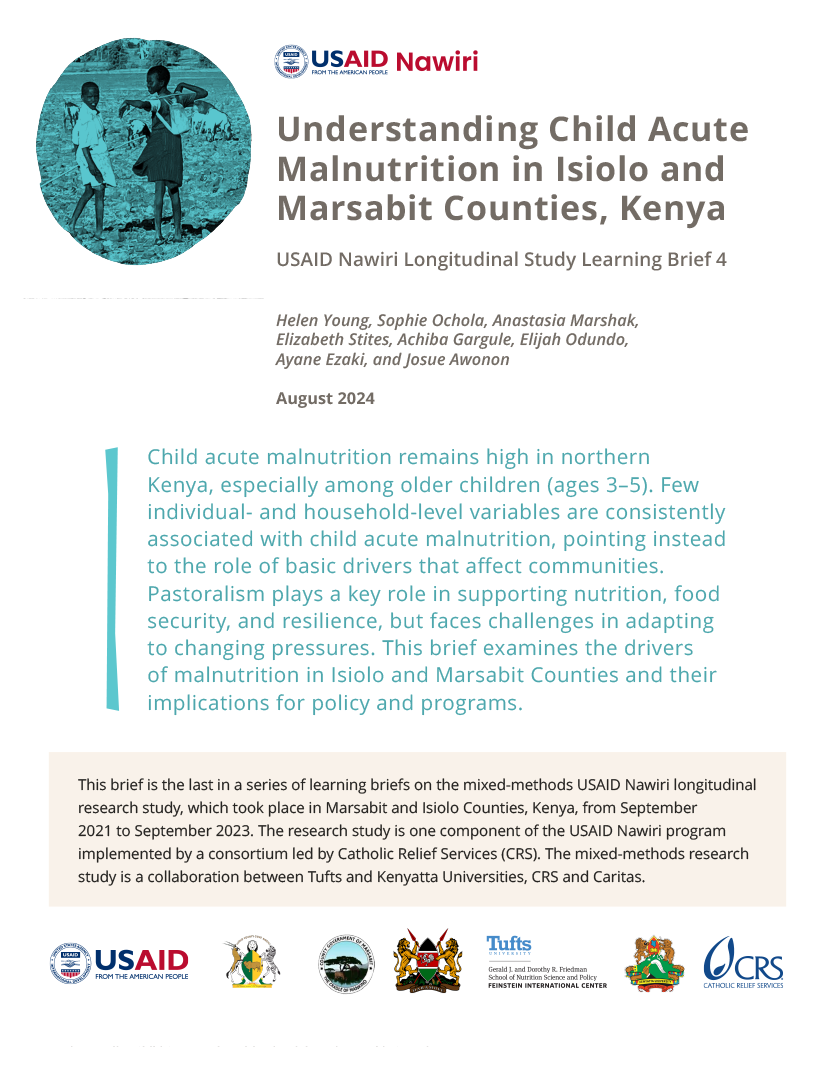This report presents the results of a participatory analysis of the causes and seasonality of malnutrition in Borana children and mothers in Cherab and Chari wards in Isiolo county, Kenya.
The field work was carried out in 16 communities that are primarily engaged in livestock production, with a focus on cattle and small ruminants.
The participants identified the following as the most important factors contributing to mother and child malnutrition:
- Malnutrition increases during the dry season and improves during the wet season. Child malnutrition peaks towards the end of the long (cool) dry season in August, with a smaller peak at the end of the short (hot) dry season in February. Participants identified the absence of livestock products, especially milk, for consumption as the most important factor contributing to these peaks. The availability of milk closely corresponds with local rainfall patterns and the availability of pasture.
- Lack of income was identified as the second-most important factor contributing to both maternal and child malnutrition. This lack limits participants’ ability to purchase nutritious foods during the dry season to compensate for the lack of livestock-based food available from their own animals.
- Human disease was identified as the third-most important factor contributing to child and maternal malnutrition. Participants made a connection between illness and a loss of appetite, as well as an inability to absorb nutrients. But they also made an association between not having a healthy diet (being undernourished) and a lowered immunity to disease and infection. Diseases associated with malnutrition were diarrhea, malaria, typhoid, HIV, pneumonia, chickenpox, and visceral leishmaniasis (kala-azar).
- Gender-related issues, such as the time burden placed on women and more broadly on the psychological burden women experience trying to support their families, often with little or no help from their husbands also contribute directly or indirectly to maternal and child malnutrition. When multiple gender issues are present, participants noted that they contribute to malnutrition as much as the lack of income and livestock products. .
Participants’ then identified interventions that could help mitigate the factors that contribute to malnutrition. For example, participants recommended different types of support to income-generating activities, including credit and training, and support to livestock production. Specific priorities varied across the assessment area depending on the opportunities and challenges associated with each location, highlighting the importance of designing context-appropriate interventions to address malnutrition.
The study involved a joint analysis with women using two participatory epidemiology (PE) methods: a monthly calendar and a causal diagram. Based on this analysis, participants were asked to identify their intervention preferences to address both child and maternal malnutrition. Learn more about the methods here.
This study is part of the Nawiri (Nutrition in the ASALs within Integrated Resilient Institution) program. Nawiri aims to sustainably reduce persistent acute malnutrition by designing and implementing an approach for supporting, strengthening, and protecting systems and institutions. The project is funded by USAID/Bureau of Humanitarian Assistance (BHA) and the consortium implementing the program in Isiolo and Marsabit counties in northern Kenya is led by Catholic Relief Services (CRS).







